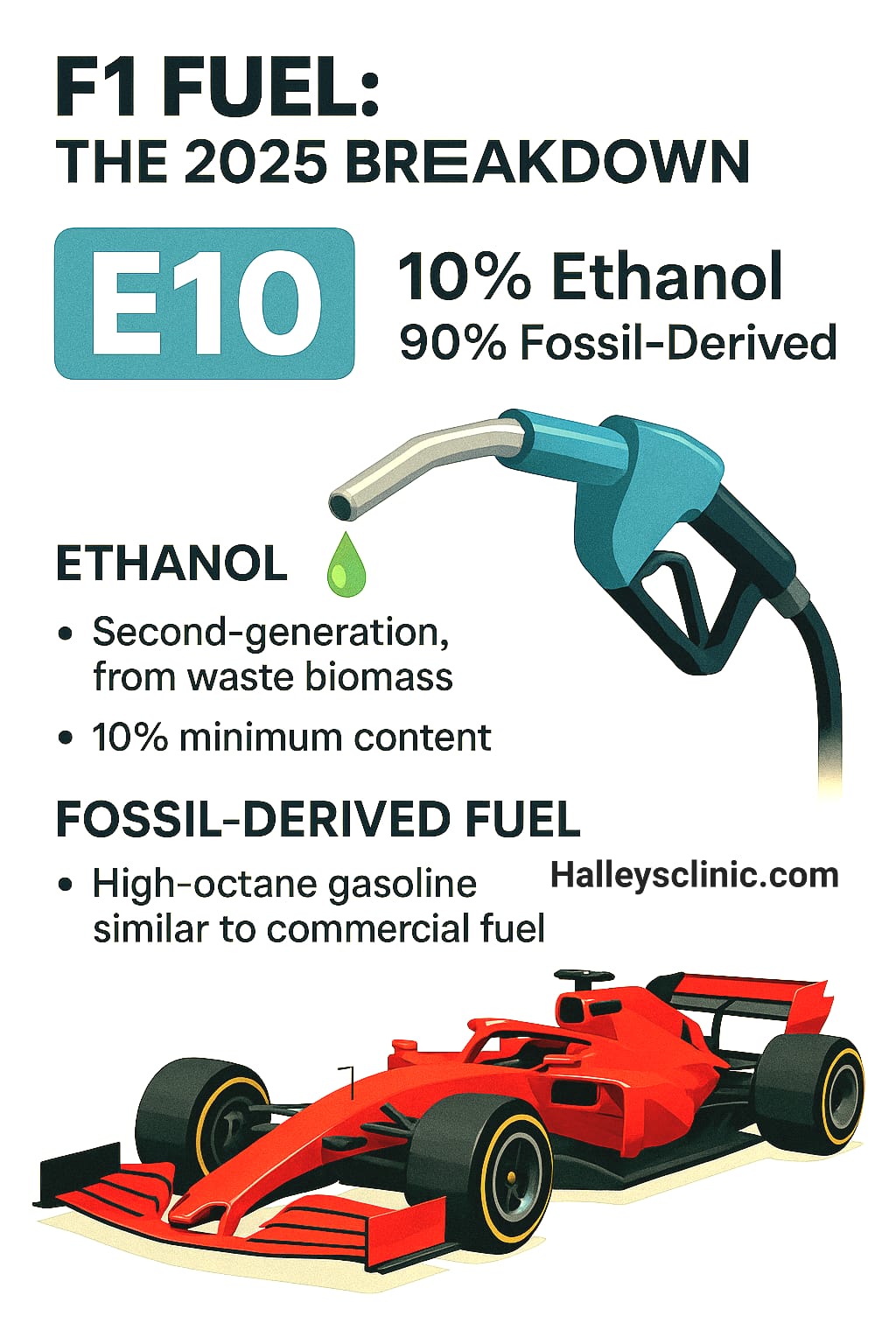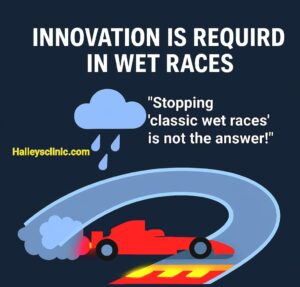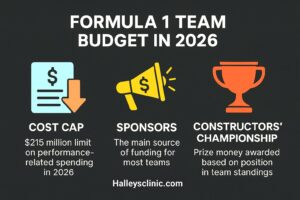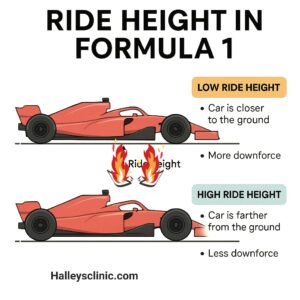What Fuel Powers the Formula 1 Cars Today? Exclusive

- By Dr. AK Rana
If you’ve ever watched a Formula 1 car scream down a straight at over 300 km/h, you’ve probably wondered:
…
“What kind of fuel powers that beast?”
Is it rocket fuel?
Jet fuel?
Something NASA cooked up in secret?
Well… not quite.
Let’s pop the fuel cap open and take a high-octane journey – because in F1, even the fuel is engineered to perfection.
…
What Fuel Is Used in F1 Today? — The 2025 Answer
…
In 2025,
Formula 1 cars use a sustainable,
second-generation biofuel blend known as E10,
which means the fuel is composed of 10% ethanol and 90% fossil-derived fuel.
But wait — this isn’t your everyday petrol.
F1 fuel looks a lot like the gasoline in your regular car, but it’s far from basic.
…
It’s a super-refined, high-energy, high-octane fuel — with octane numbers typically between 95 and 102 — tailored to squeeze out every last drop of performance.
The ethanol used is second-generation, meaning it’s not made from food crops but from waste biomass — think straw, wood chips, and agricultural waste.
…
Why E10?
Formula 1 is chasing sustainability without compromising on speed. E10 is:
Environmentally better: The ethanol portion is renewable and cuts greenhouse gas emissions.
Engine-safe: Current turbo-hybrid V6 engines are designed to work with E10 efficiently.
…
Regulation-friendly: FIA’s target is a fully sustainable fuel by 2026.
E10 is the transitional step.
…
What Did F1 Use Before E10?
Let’s take a pit stop into history.
Pre-2000s: Wild West of Race Fuel
Back in the day, F1 fuels were closer to rocket science than regular petrol.
Teams had incredible freedom to brew their own fuel cocktails.
Some used benzene-rich blends, exotic hydrocarbons, and oxygenates to spike power output.
…
Early 2000s–2021: Premium Racing Gasoline
As F1 became more regulated and environmentally conscious, the fuel used became much closer to commercial gasoline.
The FIA limited the number of compounds and required fuels to be homologated (approved).
Still, fuels were finely tuned — teams worked with suppliers like Shell, Petronas, and Mobil 1 to engineer fuels that burned cleaner, faster, and hotter.
…
The Shift to E10 in 2022
The 2022 season introduced E10, marking a key shift toward sustainability.
Ethanol became mandatory to make up 10% of the fuel content. This required a rethink in combustion strategy and engine mapping because ethanol has a different energy density and burns characteristic compared to pure gasoline.
…
Why Not Use Jet Fuel or Something More Powerful?
Good question! Here’s the science:
…
Jet fuel (kerosene-based) has low octane and burns slower. F1 engines require high-octane fuel to handle extreme compression ratios and turbocharging.
Alcohol-based fuels like methanol or nitromethane (used in drag racing) provide short bursts of massive power — but they’re inefficient for endurance and require entirely different engine architecture.
…
In short, F1 needs:
…
High energy density
Stable, clean combustion
Controlled burn rate
Compatibility with hybrid energy recovery systems
So no, F1 cars don’t run on rocket fuel — they run on something far more advanced: precision-engineered fuel that balances performance with sustainability.
Share your views in the comments
write to us at halleysclinic@gmail.com.
Stay tuned for more at halleysclinic.com
Don’t forget to follow our Instagram account https://www.instagram.com/halleysclinic
also read Why Is DRS Being Replaced by MOM in F1? New regulation






2 thoughts on “What Fuel Powers the Formula 1 Cars Today? Exclusive”